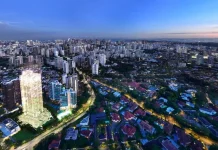In an era marked by a growing awareness of environmental challenges, sustainable landscaping practices have taken center stage. Homeowners, businesses, and communities are increasingly seeking eco-friendly alternatives that reduce water consumption, limit chemical use, and minimize the overall ecological footprint. Artificial grass, often celebrated for its aesthetic appeal and low maintenance, has emerged as a prominent player in the realm of sustainable landscaping, offering a range of benefits that align with environmentally conscious objectives.
Water Conservation
Water scarcity is a global concern, prompting a shift toward water-efficient landscaping solutions. Natural grass lawns demand copious amounts of water to thrive, especially in regions facing drought conditions. Artificial grass provides a viable alternative, as it requires no watering. This significant reduction in water consumption not only conserves a precious resource but also supports water management efforts in communities where every drop counts.
Elimination of Harmful Chemicals
Traditional lawn care practices often involve the use of chemical pesticides, herbicides, and fertilizers. These substances can pose risks to both human health and the environment, as they can leach into the soil and water systems. By transitioning to artificial grass, the need for these harmful chemicals is eliminated, contributing to a safer and more ecologically balanced landscape.
Reduction in Carbon Footprint
Maintaining a natural grass lawn demands regular mowing, which typically involves gas-powered equipment emitting greenhouse gases. Synthetic turf negates this carbon emissions source, as it requires minimal to no mowing. Consequently, the carbon footprint associated with lawn maintenance is significantly reduced, promoting cleaner air and a healthier environment.
Preservation of Biodiversity
The installation of artificial grass can help preserve local biodiversity. Traditional lawns often require the removal of native vegetation, which can disrupt local ecosystems and reduce habitat availability for wildlife. By opting for synthetic turf, natural habitats can be preserved, allowing native plants and animals to thrive without interruption.
Year-Round Beauty, Regardless of Conditions
Natural lawns can struggle to maintain their vibrant appearance during extreme weather conditions, such as droughts or heavy rainfall. Artificial grass retains its lush and appealing look regardless of weather fluctuations. This consistent visual appeal contributes to the overall aesthetic of a landscape, enhancing its beauty without compromising sustainability.
Longevity and Durability
The durability of artificial grass contributes to sustainable practices by reducing the need for replacement and disposal. High-quality synthetic turf, when properly installed and maintained, can last for many years. This extended lifespan minimizes waste generation, a critical aspect of sustainable landscaping.
Conclusion
In the pursuit of sustainable landscaping practices, the benefits of artificial grass shine brightly. From water conservation and reduced chemical use to a smaller carbon footprint and long-term durability, synthetic turf offers a wealth of advantages that align with eco-friendly objectives. As communities and individuals seek ways to balance aesthetics with environmental responsibility, the adoption of artificial grass stands out as a tangible step toward a more sustainable and greener future.










